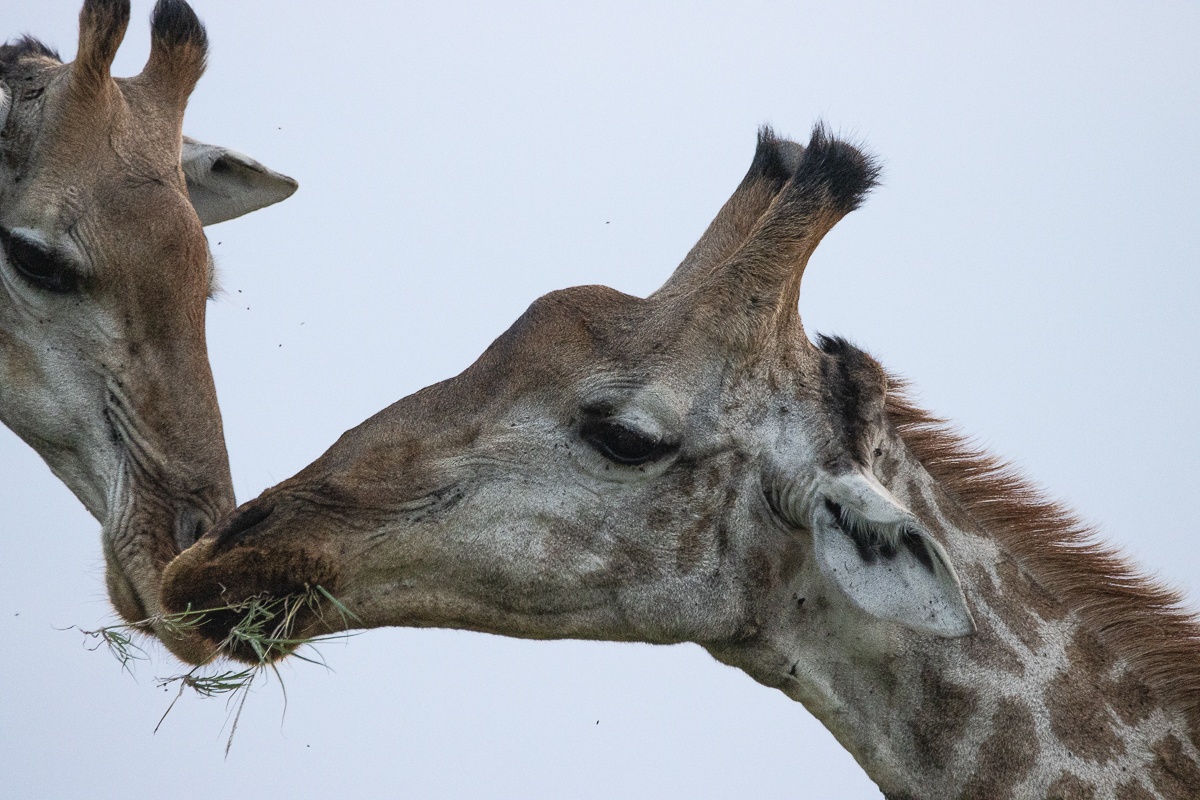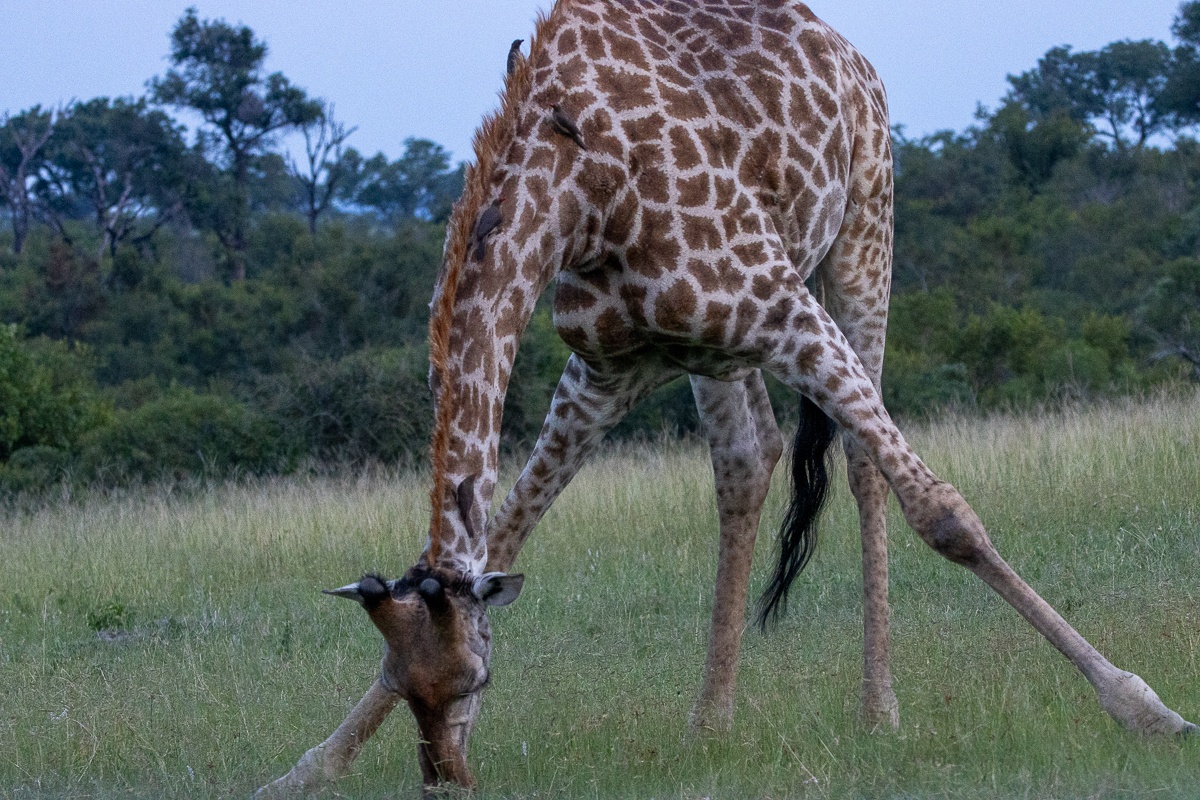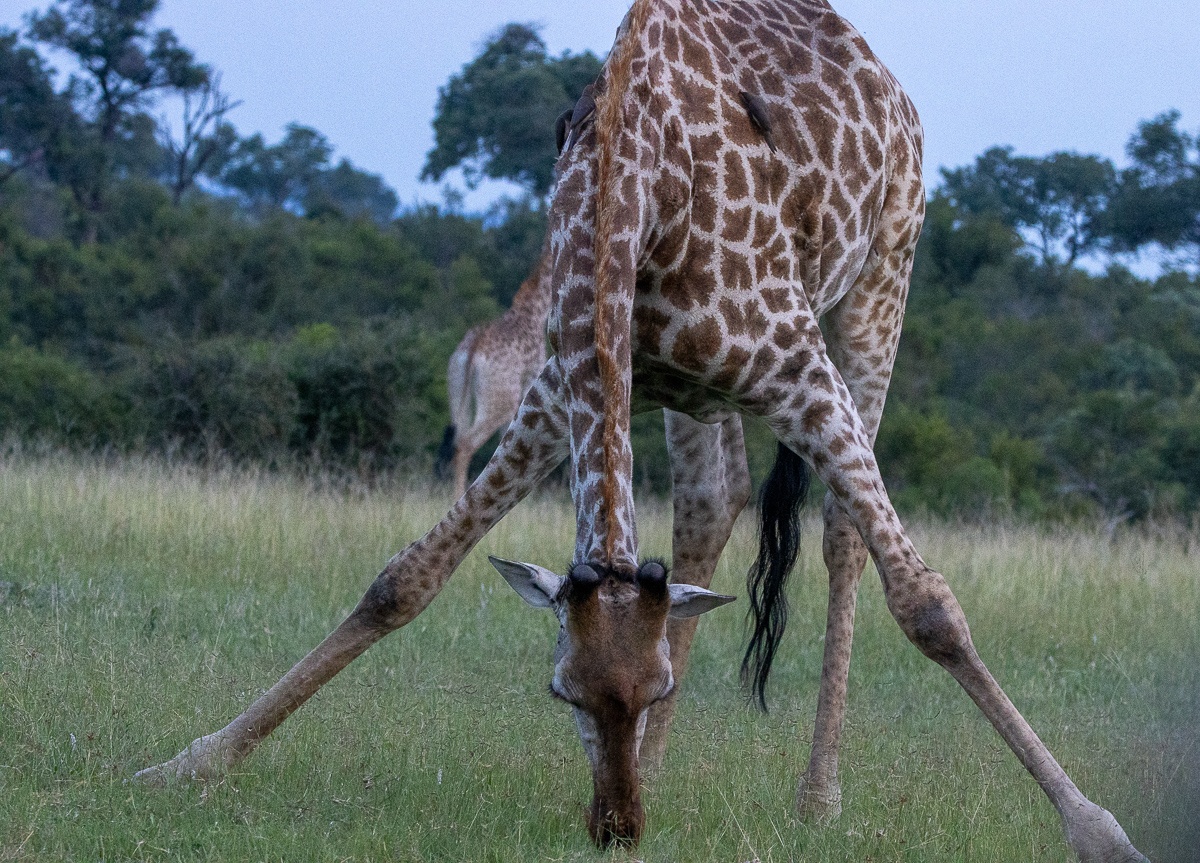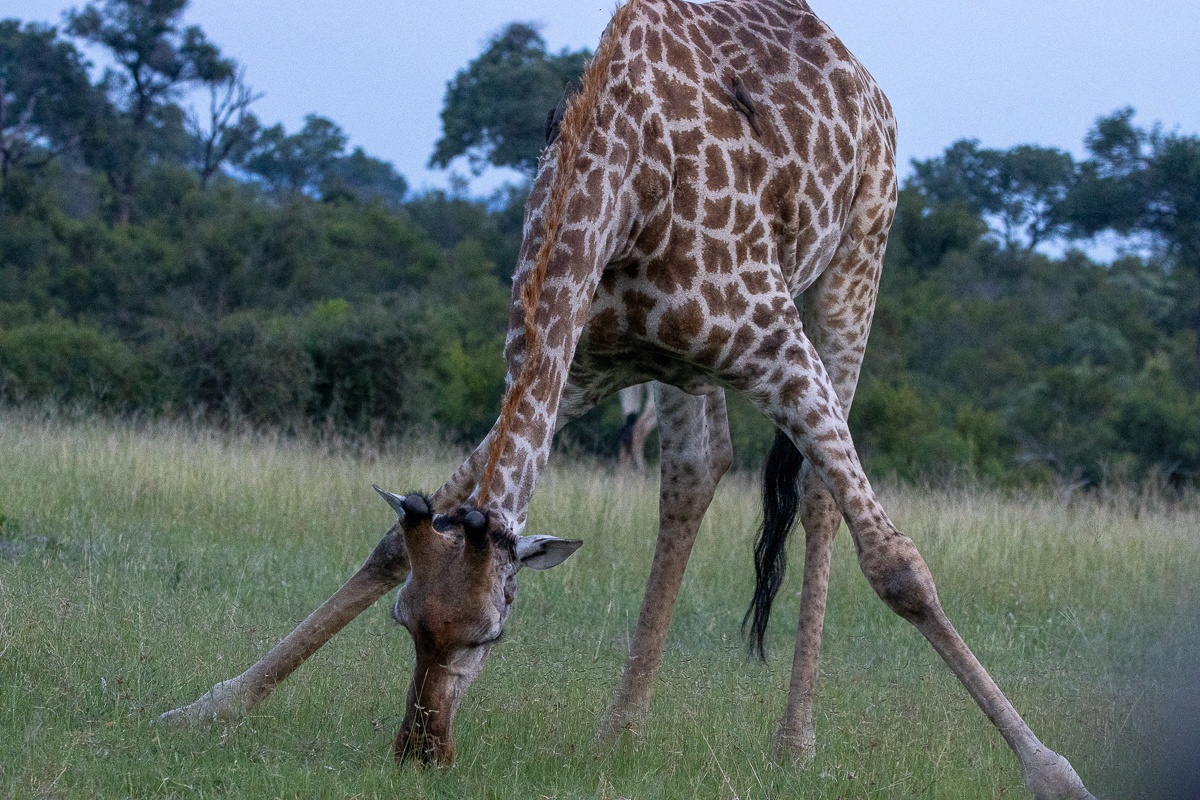Do giraffe eat grass? A common safari question answered
on Aug 26, 2025When you think of a giraffe, chances are you picture its towering silhouette against the African savannah, gracefully reaching high into the trees to nibble on leaves. It’s an iconic image - and for good reason. Giraffes are the tallest land animals on Earth, and their height plays a key role in how and what they eat.

Quite often we get asked, “Do giraffe eat grass?”
Giraffes are obligate browsers, meaning their diet primarily consists of leaves, shoots, flowers, and fruits from trees and shrubs. One of their favourite food sources is the acacia tree, known for its nutrient-rich leaves - and its long, sharp thorns. Fortunately, giraffes have evolved to handle this challenge with ease. Their most impressive adaptation is a 45–50 cm long prehensile tongue that’s tough, flexible, and darkly pigmented, likely to protect against sunburn. This remarkable tongue allows them to skilfully strip leaves from even the most thorn-covered branches with precision and efficiency.

Technically, giraffes can eat grass, and in rare circumstances - such as during droughts or severe habitat degradation - they might do so out of necessity.

Body Structure: Giraffes are built for browsing, not grazing. With their incredibly long legs and necks, bending down to eat grass is awkward, energy-consuming, and puts them in a vulnerable position to predators like lions, leopards, and hyenas.
Digestive System: As ruminants, giraffes have a four-chambered stomach, adapted to break down fibrous woody plant material. Grass, especially in large quantities, may not provide the right balance of nutrients and fibre they need for optimal health.
Feeding Competition: By feeding high in the canopy, giraffes avoid competing with the many grazing species like zebras, wildebeest, and antelope. Their vertical reach gives them exclusive access to food other herbivores can’t touch. While it's rare, giraffes do bend down to drink or sniff at ground vegetation. These moments are striking to witness, not just because of their awkward posture (front legs splayed wide, neck dropping low), but because of how carefully and briefly they perform the act.

But as the saying goes, experience is the best teacher. I once witnessed something truly unexpected: a giraffe grazing on grass like a typical ground-feeding herbivore. Surprised? So was I. I spent over an hour observing this rare behaviour - documenting it, questioning it, and trying to understand why a dedicated browser would choose to graze. Despite the obvious discomfort of bending its long neck and legs for extended periods, this giraffe seemed determined to feed on grass. Interestingly, there was no shortage of leafy trees and shrubs nearby. The giraffe simply chose the grass - defying the norm and adding a fascinating twist to what we thought we knew about its feeding habits.

It was truly a rare and captivating moment - one that demanded immediate curiosity. Why would a giraffe go to such uncomfortable lengths just to eat grass? I spent considerable time following the animal as it continued to graze, determined to uncover what was so special about the grass it had chosen. When the giraffe dropped a few clumps to the ground, I took the opportunity to inspect them. To my surprise, it was feeding on giant star grass (Cynodon plectostachyus) - a species not typically associated with giraffe diets, yet clearly appealing enough to break the norm.
This grass is common in the savanna and in some African traditions is has a lot of different traditional uses which includes but not limited to:
- Digestive Issues - Giant star grass has been used to treat diarrhoea, colic, and other stomach disorders.
- Pain Relief - It has been used traditionally to relieve rheumatism, cramps, and sore breasts.
- Gynaecological Aid - It has been used to strengthen the womb and as a general gynaecological aid.
- Respiratory Problems - It has been used for coughs and as a remedy for liver and lung conditions.
- Skin Conditions - It has been used to treat athlete's foot and can be used to stop bleeding in cuts and wounds due to its astringent properties.
- Safety - Although widely used in traditional medicine, more scientific research is needed to fully understand the pharmacological properties and potential benefits of Giant star grass.
Would the giraffe have been grazing on this particular type of grass for one or more of these benefits? As it has been recorded in some instances, giraffe and other animal species would supplement defiance in their diets by chewing on bones or licking on different types of soils, as uncomfortable as it is for the giraffe to bend down for longer periods of time it is however essential for them to do so in order to acquire required nutrients and or medicinal help from other sources of food apart from their main diet.
Blog by Ronald Mutero (Selati Camp Ranger)







